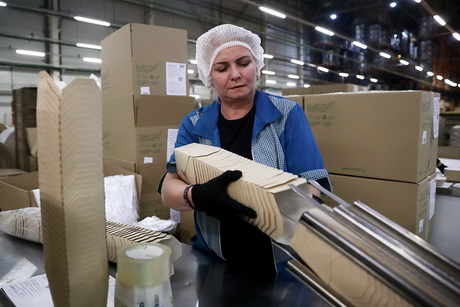The coronavirus epidemic has made increased demands on the quality of packaging of food and other consumer goods. And 2020 has shown that packaging also has a huge sanitary and protective purpose.
It must be both environmentally friendly, that is, recyclable and recyclable, and at the same time reliably protect the product from infection and ensure proper shelf life. How compatible are these requirements, and are packaging manufacturers ready for such challenges?
According to the Russian Environmental Operator, about 60 million tons of household garbage (municipal solid waste, MSW) are generated in our country every year. Half of this "Jomolungma" is packaging of consumer goods. At the state level, the task has been set to create a sustainable MSW management system by 2030, which would ensure their one hundred percent sorting and a twofold reduction in the amount of waste exported to landfills. All this fully applies to packaging.
There are two ways to achieve these benchmarks: produce less waste and recycle more of it. According to Denis Butsaev, CEO of the Russian Environmental Operator, non-recoverable waste makes up about a third of the total volume of MSW. And the rest can and should return to a second life. Thus, plastic can be restored up to 7 times without loss of consumer qualities. Glass, iron, aluminum can be used an unlimited number of times.
"But the main thing is to change the mental attitude to MSW and the behavior of participants in the waste generation process, that is, citizens," the head of the REO is sure. Along with separate garbage collection, it is necessary to think about conscious consumption, including packaging. Switch to reusable types of packaging. And perceive waste as a commodity that we can use. It is necessary to form a model of behavior that excludes mixing of waste to such an extent that it is impossible to put it into secondary circulation."
It is precisely to increase the level of processing of household packaging that the latest changes in the Concept of ROP (extended producer responsibility) are aimed at, and against its background, proposals are very often made to reduce the consumption of goods in packaging. But the main thing is to properly sort and recycle this package after use. Its manufacturers are implementing various technological solutions that make it possible to increase the recyclability of the "wrapper". For example, there is already plastic made from environmentally friendly materials - wood, sugar cane. A beautiful type of packaging is paper and cardboard, but for storing, for example, liquid products, they need to add "barrier" properties.
Five years ago, there was no infrastructure for processing cardboard-combined packaging in the Russian Federation, now there are 4 enterprises. Thus, the L-Pak plant in the Lipetsk region produces up to 800 tons of paper per day from tetrapak packaging for juices and milk, which consists of 75 percent cardboard. The infrastructure for processing glass and especially aluminum is well developed in Russia. According to recycling of the latter, by the way, the Russian Federation is among the top 3 world leaders.
Unfortunately, despite the calls for conscious consumption, the "production" of household garbage in the world in general and in Russia in particular is only increasing. Over the past 20 years, the volume of MSW in the Russian Federation has almost doubled. The reason for the growth is the marketing functions of packaging. And if from an environmental point of view it should be easier for recycling, then from a marketing point of view it should be unkillable at all.
"Marketing is a perpetual motion machine of packaging complexity," says Denis Butsaev. - This is especially true for children's goods. It is the clash of marketing and environmental interests that prevents the development of environmental friendliness of packaging. Now 18 million tons of MSW out of 60 are sent for processing, and only 2.7 million tons are returned to secondary circulation."
A source: //upakovano.ru/news/552762

